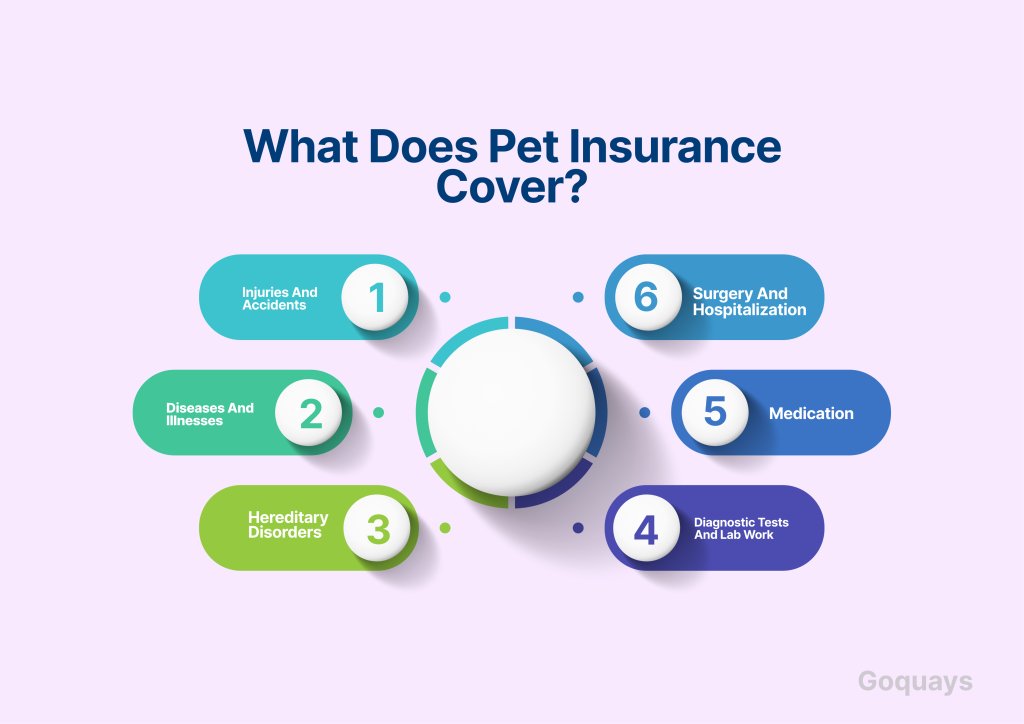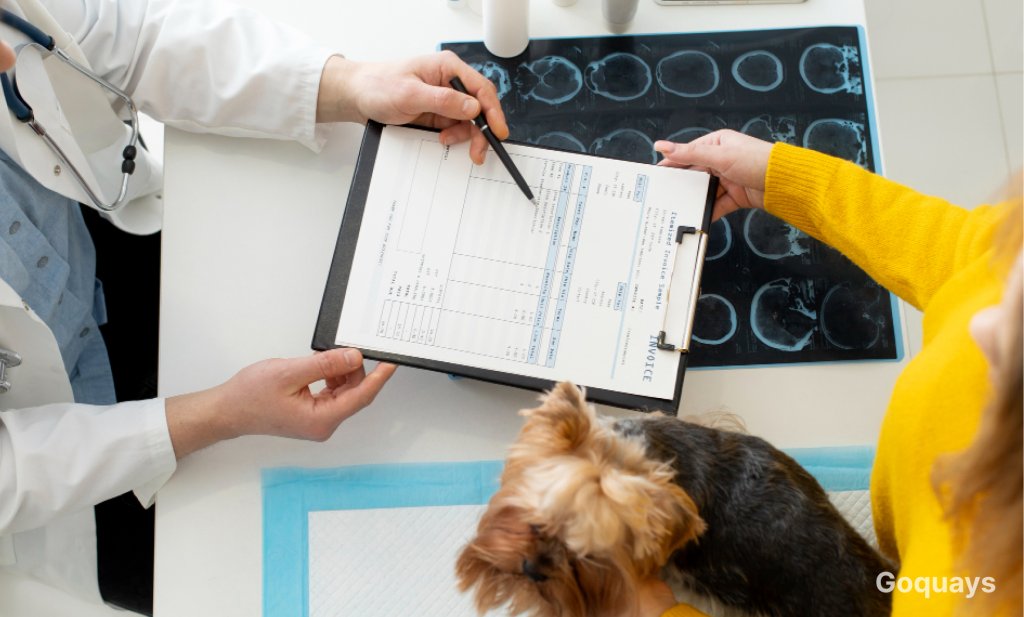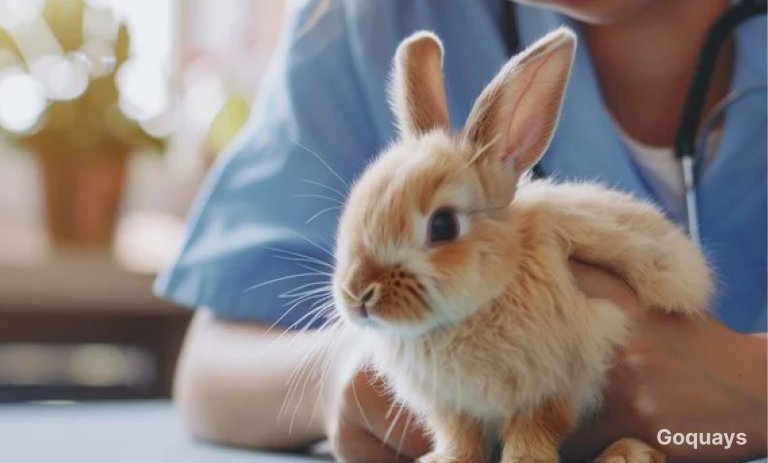One of the benefits of owning a pet is the joy it brings, you also enjoy companionship and unconditional love from your furry family member. However, there are responsibilities that come with owning a pet, especially the financial strain that it can place on you. One of the biggest challenges that pet owners face is emergency vet bills which can run into hundreds of pounds. Pet insurance remains the best way to protect yourself from these unexpected expenses, ensuring that your pet receives the best care possible without putting a strain on your finances.
Imagine that late one night, your pet suddenly becomes ill or injured and you rush to the emergency, after examination by the vet, you are given a bill of £2000, what would you do?
This is the reality for many pet owners especially if they do not have pet insurance. Vet bills can sometimes be incredibly expensive leaving you scrambling to figure out how to pay them. Nobody wants their pet to become ill or get hurt, but when it happens, money is the last thing you want to worry about.
Pet insurance gives you peace of mind and guarantees your pet receives the required care when they need it, shielding you from unforeseen medical expenses. We will examine the benefits of pet insurance, what it covers, how to determine the best level of coverage and what you need to look out for in an insurance policy to protect your pets.
Why is Pet Insurance Important?
Pets just like humans suddenly get sick or become injured. Pet insurance helps to relieve the financial burden of these unexpected medical expenses, ensuring that your pet gets the best possible care without you having to worry about the cost. Here are some of the reasons why pet insurance is essential for your furry friends.
- Covers Expensive Medical Bills
The cost of an emergency veterinary visit can range from £500 for minor treatments to several thousand pounds for critical care, ongoing treatments, or surgery. These expenses will be covered out of pocket if insurance is not obtained, which can leave pet owners in the difficult situation of having to decide between their pet’s health and their financial security. With pet insurance, you can concentrate on your pet’s recuperation rather than the expense of medical care.
- Covers for Unexpected Accidents and Illnesses
Pets are inherently curious, so accidents happen no matter how cautious you are. Pet insurance helps you afford the best treatment when your pet needs it most by covering diagnostic tests, surgeries, prescriptions, and hospital stays, whether it’s a broken leg from a poorly timed jump, an allergic reaction, or an unforeseen disease.
- Access to the Best Veterinary Care
Instead of settling for the least expensive treatment option, having pet insurance allows you to select the best ones. You can explore cutting-edge treatments like MRI scans, chemotherapy, or specialised operations without worrying about the cost if you have insurance. This can greatly increase your pet’s chances of recovery and quality of life.
- Multi Pet Cover
Several insurance companies provide multi-pet discounts for individuals or families with several pets, which makes it even more affordable to insure all of your furry friends under a single policy. That way, you can avoid incurring crippling costs and be protected against unforeseen health problems affecting all of your pets.
What Does Pet Insurance Cover?

Understanding what is (and isn’t) covered before selecting a policy is crucial since pet insurance can be a lifesaver when it comes to handling unforeseen veterinary bills. The majority of pet insurance policies normally cover the following, though coverage varies by plan and provider:
Injuries and Accidents
Accidents happen, whether it’s a deep cut from play, a fractured bone from a tumble, or an inadvertent consumption of something dangerous. Pets are inherently curious. Pet insurance typically helps you avoid expensive out-of-pocket costs in dire circumstances by covering emergency care, surgeries, X-rays, and hospital stays for injuries.
Diseases and Illnesses
Unexpected ailments like infections, digestive problems, or chronic conditions like diabetes, arthritis, or kidney disease can strike even the healthiest pets. Comprehensive pet insurance plans assist in paying for continuing medical care for a variety of ailments, diagnostic tests, prescription drugs, and veterinary consultations.
Hereditary Disorders
Certain pets are more likely to develop breed-specific or genetic disorders that could necessitate ongoing care or surgery. For instance, huge breeds like Golden Retrievers are susceptible to hip dysplasia, whereas French Bulldogs frequently experience respiratory issues. As long as these conditions weren’t pre-existing when the policy was enrolled, many lifelong pet insurance policies cover them.
Medication
Pets, just like humans, may require medication to treat chronic ailments, recuperate from illnesses, or ease post-operative discomfort. Prescription drugs, including antibiotics, painkillers, and allergy treatments, are usually covered by pet insurance.
Surgery and Hospitalization
If your pet requires surgery, due to an illness, the expense can easily exceed thousands of pounds. Many pet insurance plans cover both planned and emergency procedures, including post-operative care, hospitalization, and follow-up treatments.
What Pet Insurance Does Not Cover
Despite the broad coverage provided by pet insurance, there are some exclusions to be mindful of, these include:
- Pre-Existing Conditions: Generally, insurance does not cover any disease or injury your pet had prior to obtaining coverage. After a waiting time, some insurers do, however, provide coverage for pre-existing diseases that can be cured.
- Routine and Preventative Care: Unless you have an add-on wellness plan, standard pet insurance usually does not cover vaccinations, flea and tick treatments, dental cleanings, spaying/neutering, or yearly check-ups.
- Cosmetic or Elective Procedures: Generally, procedures like tail docking, ear cropping, or claw removal are not covered.
Breeding Costs: Insurance will not pay for expenses associated with breeding, pregnancy, or delivery difficulties if your pet becomes pregnant.
Understanding the Cost of Pet Ownership

Pet ownership can be a fulfilling and transformative experience, but it also entails some financial commitment. A lot of people underestimate the actual cost of owning a pet because they wrongly assume that all a pet needs is food. The reality is that apart from food, pet owners must budget for veterinary care, grooming, toys, accommodation (such as an outdoor hutch for a rabbit), vaccinations, routine checks with the vet, and unforeseen medical problems in addition to the initial cost of adoption or purchase.
Vet fees vary based on where you live, also the breed, age, size, and the seriousness of the illness are all factors that can affect your Vet bills. Most of the time, if your pet becomes ill and you visit the vet, you will be required to pay a consultation fee unless the clinic is run by a charity or non-profit organization. After paying for the consultation, you will pay additional costs for the treatment received.
Claims for pet insurance often add up to hundreds of pounds. It’s also important to keep in mind that some procedures and treatments might be far more expensive, even though not all claims are for veterinary expenditures.
It’s crucial to consider if you could afford these expenses in the absence of insurance and, if not, what are the potential consequences for your pet. Understanding these expenses guarantees that your pet gets the best care possible throughout their life and aids in prudent planning and preparation.
Average Vet Costs
| Treatment Type | Estimated Cost |
| Minor consultation | £40 – £60 |
| X-rays | £200 – £400 |
| Surgery | £1,000 – £3,000 |
| Emergency care | £800 – £2,500 |
| Annual Vaccinations | £50 – £80 |
| Chemotherapy | £3000 – £10,000 |
| Hip replacement | £5,000 – £7,000 |
How Pet Insurance Can Help
Pet insurance can be a lifesaver because veterinary bills are among the highest costs associated with pet ownership. You can obtain coverage for diseases, accidents, surgeries, and more by paying a monthly or yearly premium, which will spare you from unforeseen financial stress.
Despite being a long-term financial commitment, owning a pet may be one of the most rewarding experiences of your life if you plan ahead. You can make sure your pet has a happy, healthy, and well-cared-for life by setting aside money for both anticipated and unforeseen expenses.
Be financially prepared, make a plan, and get pet insurance so you can concentrate on creating memories with your pet!
How Much Cover is Right for Your Pet?
With so many options available, selecting the appropriate level of pet insurance coverage can be difficult. The breed, age, health history, and lifestyle of your pet all affect how much coverage is appropriate. Despite the temptation to choose the least expensive option, having the appropriate level of coverage guarantees that your pet receives the finest treatment possible with a hassle-free claims process.
Understanding the Different Coverage Levels Available
Generally speaking, pet insurance policies include a range of coverage levels, from basic accident-only plans to full lifetime coverage. Below is a summary of the primary cover types:
| Type of Pet Insurance | What it Covers | Best For | Potential Drawbacks |
| Accident only | Covers treatment for accidental injuries. | Young, healthy pets with low risk of illness. | Doesn’t cover illnesses, ongoing conditions, or hereditary diseases. |
| Time-limited | Covers accidents and illnesses for a predetermined time (e.g., 12 months per condition). | Short-term health issues or minor illnesses. | Conditions become excluded after the time limit ends. |
| Maximum benefit | Covers a set amount per condition (e.g., £2,000 per illness or injury). | Pet owners who want coverage for treatable conditions. | Once the limit is reached for a condition, it is no longer covered. |
| Lifetime | Covers accidents, illnesses, and chronic conditions for your pet’s entire life. | Pets that are likely to require ongoing medical treatments, such as bulldogs. | More expensive but offers the most protection. |
Factors to Consider When Choosing a Policy Cover
It is important to know that not all pets require the same level of coverage, here are some factors to consider before choosing an insurance policy:
Breed: some pet breeds are more prone to health issues and may require higher coverage. If your pet’s breed is known to have genetic disorders or illnesses that require ongoing care, a comprehensive lifetime policy is the ideal option to avoid unwanted exclusions.
Age: just like with human beings, older pets are more likely to develop illnesses than younger ones, if you have older pets, it is advisable to opt for a comprehensive insurance cover.
Budget: consider your budget and how much you are willing to spend on your pet’s insurance. Strive to strike a balance between affordable monthly premiums and adequate coverage.
Lifestyle: The lifestyle you choose for your pet is a major factor in determining the level of coverage you require. If your pet is allowed to roam free outdoors, they may be at a higher risk of accidents and mishaps.
Finally, Is Pet Insurance Really Worth It?

Pet insurance may seem like an uncomfortable financial stress in the beginning, but you will soon realize that it is a very vital expense when you get a vet bill of £5000. Nobody wants to be in a position where you have to choose between your pet’s health and your finances. You can give your pet the best care possible without worrying about money if you have the right insurance policy.
Take Action Today!
- Research and compare different providers and policies to determine the best plan for your pet.
- Consider your pet’s breed, age, and lifestyle when choosing a policy.
- Visit the website of providers to read customer reviews to ensure excellent customer service and reliable claims process.
By investing in the appropriate pet insurance, you’re safeguarding your furry family member and giving them access to the best care available, no matter what life throws their way. When making important healthcare decisions, having coverage eliminates any hesitation, whether it is for a long-term treatment, emergency surgery, or a routine checkup.





